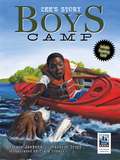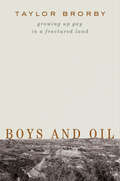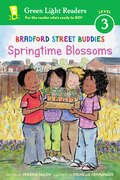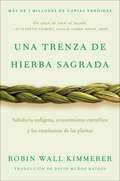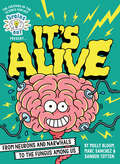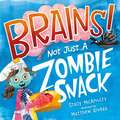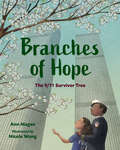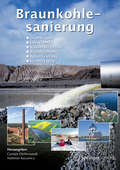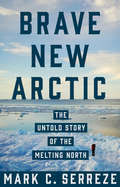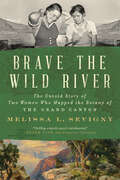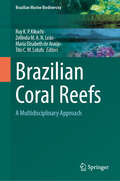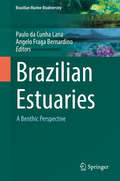- Table View
- List View
Boys Camp: Zee's Story
by Valerie Tripp Craig Orback Kitson JazynkaWho are the two funniest guys at Camp Wolf Trail? Will ’n’ Zee--no question! The best buddies have emailed all winter long, and now they’re back at camp, with millions of great ideas for practical jokes and more than a few big surprises to spring on their fellow campers and counselors. Will and Zee are a trickster team of two. They’re partners-in-pranks, a dynamic duo, a famously hilarious pair. At first, all the mayhem and mischief they cause is a big success. Who’d have guessed that a stuffed octopus, toilet paper, and pies could be combined so comically? Will and Zee’s twist on a Camp Wolf Trail tradition is brilliant--and means that they’re rewarded with the privilege of doing Dead Man’s Dive off Big Boulder into O’Mannitt’s Cove. They’re sure their next triumph will be finding the camp’s best-kept secret: the location of Hidden Falls. But when Zee tries to include other guys in the searching, plotting. planning, and fun, Will gets mad, and their friendship blows up. Zee must face his scariest, most dangerous crisis on his own while on a kayaking trip, and for a while, it looks like all is lost. Will Zee be able to save Cookie’s life and rescue his friendship with Will, too? Is this the end of Will ’n’ Zee? Must Hidden Falls remain hidden? One thing’s for sure: Zee will have an adventure-packed summer at Camp Wolf Trail!
Boys and Oil: Growing Up Gay In A Fractured Land
by Taylor BrorbyFrom a young, gay environmentalist, a searing coming-of-age memoir set against the arid landscape of rural North Dakota, where homosexuality “seems akin to a ticking bomb.” “I am a child of the American West, a landscape so rich and wide that my culture trembles with terror before its power.” So begins Taylor Brorby’s Boys and Oil, a haunting, bracingly honest memoir about growing up gay amidst the harshness of rural North Dakota, “a place where there is no safety in a ravaged landscape of mining and fracking.” In visceral prose, Brorby recounts his upbringing in the coalfields; his adolescent infatuation with books; and how he felt intrinsically different from other boys. Now an environmentalist, Brorby uses the destruction of large swathes of the West as a metaphor for the terror he experienced as a youth. From an assault outside a bar in an oil boom town to a furtive romance, and from his awakening as an activist to his arrest at the Dakota Access Pipeline, Boys and Oil provides a startling portrait of an America that persists despite well-intentioned legal protections.
Bradford Street Buddies: Springtime Blossoms (Green Light Readers Level 3)
by Jerdine Nolen Michelle HenningerCHIRP! CHIRP! CHIRP! It’s springtime on Bradford Street. Jada and Jamal are searching for signs of spring. So are their best friends, Carlita Garcia and Josh Cornell. But the most surprising sign of spring awaits them at school the next day . . . a surprise that blossoms into a colorful plan to beautify the schoolyard just in time for Earth Day. Get set to dig in and join the neighborhood fun with the Bradford Street Buddies!
Braiding Sweetgrass / Una trenza de hierba sagrada (Spanish edition): Sabiduría indígena, conocimiento científico y las enseñanzas de las plantas
by Robin Wall KimmererUno de los libros más importantes de nuestros tiempos, que nos invita a descubrir un nuevo lenguaje para comunicarnos con la naturaleza y recibir sus enseñanzas. Como mujer indígena, Robin Wall Kimmerer es heredera de un valioso legado que considera a los animales y las plantas nuestros mejores maestros. Como botánica, se ha valido del rigor científico para estudiar mejor la naturaleza. Y como madre, profesora y escritora, ha dedicado su vida a conjugar ambas perspectivas para abogar por un despertar de la consciencia ecológica que reconozca y celebre nuestra profunda conexión con otras formas de vida.En Una trenza de hierba sagrada, la autora entreteje experiencias y saberes en una serie de relatos iluminadores y emotivos que nos inspiran a fortalecer nuestra relación sagrada con la Madre Tierra. Cada capítulo es una magnífica lección de gratitud y reciprocidad, que nos recuerda que, si ofrecemos nuestros dones al mundo y lo ayudamos a sanar, este nos retribuirá con la armonía y el bienestar que tanto anhelamos.Bestseller del New York TimesBestseller del Washington PostBestseller del Los Angeles Times«Mejor Colección de Ensayos de la Década» según Literary Hub———A masterpiece of our times, inviting us to discover a new language for communicating with nature and receiving its lessons.As a Native American woman, Robin Wall Kimmerer is the heir to a valuable legacy that views animals and plants as our greatest and oldest teachers. As a botanist, she leverages scientific knowledge to better understand nature. And as a mother, teacher, and writer, she has dedicated her life to blending these perspectives and advocate for an awakening of ecological consciousness that acknowledges and celebrates our deep connection with other forms of life.In Braiding Sweetgrass, the author weaves together experiences and knowledge in a series of illuminating and emotional stories that inspire us to reinvigorate our sacred relationship with Mother Earth. Each chapter offers a magnificent lesson in gratitude and reciprocity, reminding us that if we contribute our gifts to the world and help it heal, it will reward us with the harmony and wellness we are yearning for.A New York Times BestsellerA Washington Post BestsellerA Los Angeles Times BestsellerNamed a “Best Essay Collection of the Decade” by Literary Hub
Braiding Sweetgrass: Indigenous Wisdom, Scientific Knowledge And The Teachings Of Plants
by Robin Wall KimmererAs a botanist, Robin Wall Kimmerer has been trained to ask questions of nature with the tools of science. As a member of the Citizen Potawatomi Nation, she embraces the notion that plants and animals are our oldest teachers. In Braiding Sweetgrass, Kimmerer brings these two lenses of knowledge together to take us on “a journey that is every bit as mythic as it is scientific, as sacred as it is historical, as clever as it is wise” (Elizabeth Gilbert). <p><p> Drawing on her life as an indigenous scientist, and as a woman, Kimmerer shows how other living beings―asters and goldenrod, strawberries and squash, salamanders, algae, and sweetgrass―offer us gifts and lessons, even if we've forgotten how to hear their voices. In reflections that range from the creation of Turtle Island to the forces that threaten its flourishing today, she circles toward a central argument: that the awakening of ecological consciousness requires the acknowledgment and celebration of our reciprocal relationship with the rest of the living world. For only when we can hear the languages of other beings will we be capable of understanding the generosity of the earth, and learn to give our own gifts in return. <p> <b>A New York Times Bestseller</b>
Braiding Sweetgrass: Indigenous Wisdom, Scientific Knowledge and the Teachings of Plants
by Robin Wall KimmererDrawing on her life as an indigenous scientist, and as a woman, Kimmerer shows how other living beings―asters and goldenrod, strawberries and squash, salamanders, algae, and sweetgrass―offer us gifts and lessons, even if we've forgotten how to hear their voices. In reflections that range from the creation of Turtle Island to the forces that threaten its flourishing today, she circles toward a central argument: that the awakening of ecological consciousness requires the acknowledgment and celebration of our reciprocal relationship with the rest of the living world. For only when we can hear the languages of other beings will we be capable of understanding the generosity of the earth, and learn to give our own gifts in return.
Brains On! Presents...It's Alive: From Neurons and Narwhals to the Fungus Among Us
by Molly Bloom Marc Sanchez Sanden TottenThe creators of the award-winning science podcast for kids, Brains On!, present a humorous, highly illustrated, fact- and fun-filled look at life on Earth— from deep sea creatures and carnivorous plants to the human body and stinky bacteria. Perfect for STEM collections! Did you ever wonder why jellyfish sting? Or if trees communicate with each other? How about why you can't tickle yourself?Well hold on to your noggins, because you're about to find out! Join the creators of the award-winning science podcast Brains On! as they explore the uber-awesome and sometimes gross world of biology—aka the study of living things. Inside these pages, you'll meet animals with superpowers, plants that eat meat, brains that trick you, and tiny microbes that live, well . . . all over you!Packed with mind-boggling facts and laugh-out-loud jokes, this book promises a brain-bending, jaw-dropping, belly-laughing good time as readers watch the world around them come ALIVE.
Brains! Not Just a Zombie Snack
by Stacy McAnultyFrom Stacy McAnulty, author of the funny STEM picture book Earth! My First 4.54 Billion Years and Our Universe series, comes the beginning of an exciting new picture book series focused on the science of the body. Brains. 78% water, 100% delicious. A zombie chef who has sworn off eating brains salivates over this super powerful organ in this funny and fact-filled picture book. From learning about how the brain processes messages from our five senses, to learning why wrinkly human brains are so much more powerful than smooth mouse brains, this is a hilarious introduction to the organ that does it all. Rich with kid-friendly facts and beautifully brought to life by Matthew Rivera, this is a charming and irresistible picture book.
Branches
by Mark TruscottWinner of the 2020 Nelson Ball PrizeCareful attention reveals that, even in moments that seem insignificant, our minds are constantly navigating disjunctions among registers of experience. Our intellect silently reminds our eyes that the car that appears to be moving between leaves is actually behind them and much larger. The sound of the vacuum cleaner in the next room is noise to be ignored. The phrase that arises in mind belongs to a conversation earlier in the day. Clear thinking demands that these navigations remain unconscious. But what if they're meaningful, or productive, in themselves? What if they're necessary to help us find a more meaningful place in the world? Branches explores these questions.
Branches of Hope: The 9/11 Survivor Tree
by Ann Magee&“This true-life fable about a tree that survived 9/11 commemorates the attack while evoking a resilient spirit and the healing power of nature."—Carole Boston Weatherford, author of Newbery Honor book BOX&“Branches of Hope is a tribute to resilience and hope, a gentle way to talk with our youngest readers about the memory of 9/11.&”—Kate Messner, author of The Brilliant Deep: Rebuilding the World's Coral ReefsThe branches of the 9/11 Survivor Tree poked through the rubble at Ground Zero. They were glimpses of hope in the weeks after September 11, 2001. Remember and honor the events of 9/11 and celebrate how hope appears in the midst of hardship. The Survivor Tree found at Ground Zero was rescued, rehabilitated, and then replanted at the 9/11 Memorial site in 2011. This is its story.In this moving tribute to a city and its people, a wordless story of a young child accompanies the tree's history. As the tree heals, the girl grows into an adult, and by the 20th anniversary of 9/11, she has become a firefighter like her first-responder uncle. A life-affirming introduction to how 9/11 affected the United States and how we recovered together.
Braunkohlesanierung: Grundlagen, Geotechnik, Wasserwirtschaft, Brachflächen, Rekultivierung, Vermarktung
by Carsten Drebenstedt Mahmut KuyumcuAllein im Raum Halle/Leipzig und der Lausitz wurden etwa 30 Braunkohlentagebaue und 90 Kraftwerks- und Veredlungsstandorte seit Anfang der 1990er Jahre saniert mit dem Ziel, Umweltsch#65533;den zu beseitigen und die Landschaft wiederherzustellen. Vertreter aus Beh#65533;rden und Hochschulen, Sanierungsunternehmen und Planungsb#65533;ros erl#65533;utern die eigens daf#65533;r entwickelten Technologien, sie beschreiben die Managementstrukturen und ihre Erfahrungen bei der Sanierung des stillgelegten Braunkohlenbergbaus. Mit zahlreichen Abbildungen und Tabellen sowie einem Glossar.
Brave Irene
by William SteigBrave Irene is Irene Bobbin, the dressmaker's daughter. Her mother, Mrs. Bobbin, isn't feeling so well and can't possibly deliver the beautiful ball gown she's made for the duchess to wear that very evening. So plucky Irene volunteers to get the gown to the palace on time, in spite of the fierce snowstorm that's brewing-- quite an errand for a little girl. But where there's a will, there's a way, as Irene proves in the danger-fraught adventure that follows. She must defy the wiles of the wicked wind, her most formidable opponent, and overcome many obstacles before she completes her mission. Surely, this winning heroine will inspire every child to cheer her on. Brave Irene is a 1986 New York Times Book Review Best Illustrated Book of the Year.
Brave Little Puppy (A Wish Book)
by Lori EvertA board book adventure set in the wintry world of the New York Times bestseller The Christmas Wish! The star of The Christmas Wish, Anja, has a very curious puppy that's lost in the woods! Luckily, his many kind forest friends—a polar bear, lynx, reindeer, squirrel, fox, and more—help guide him back to Anja&’s arms. Husband-and-wife duo Lori Evert and Per Breiehagen have brought us another breathtakingly beautiful photographic adventure about their daughter, Anja, and her woodland friends, and introduce readers to her brave puppy, Birki.Don't miss the other "Wish" books:The Christmas WishThe Reindeer WishThe Tiny WishThe Puppy's Wish The Polar Bear Wish
Brave New Arctic: The Untold Story of the Melting North (Science Essentials)
by Mark C. SerrezeAn insider account of how researchers unraveled the mystery of the thawing ArcticIn the 1990s, researchers in the Arctic noticed that floating summer sea ice had begun receding. This was accompanied by shifts in ocean circulation and unexpected changes in weather patterns throughout the world. The Arctic's perennially frozen ground, known as permafrost, was warming, and treeless tundra was being overtaken by shrubs. What was going on? Brave New Arctic is Mark Serreze's riveting firsthand account of how scientists from around the globe came together to find answers.In a sweeping tale of discovery spanning three decades, Serreze describes how puzzlement turned to concern and astonishment as researchers came to understand that the Arctic of old was quickly disappearing--with potentially devastating implications for the entire planet. Serreze is a world-renowned Arctic geographer and climatologist who has conducted fieldwork on ice caps, glaciers, sea ice, and tundra in the Canadian and Alaskan Arctic. In this must-read book, he blends invaluable insights from his own career with those of other pioneering scientists who, together, ushered in an exciting new age of Arctic exploration. Along the way, he accessibly describes the cutting-edge science that led to the alarming conclusion that the Arctic is rapidly thawing due to climate change, that humans are to blame, and that the global consequences are immense.A gripping scientific adventure story, Brave New Arctic shows how the Arctic's extraordinary transformation serves as a harbinger of things to come if we fail to meet the challenge posed by a warming Earth.
Brave the Wild River: The Untold Story of Two Women Who Mapped the Botany of the Grand Canyon
by Melissa L. SevignyWinner of the 2023 National Outdoor Book Award for History/Biography Finalist for the Reading the West Book Award in Memoir/Biography A Booklist Top of the List Winner for Nonfiction in 2023 A New Yorker Best Book of 2023 "Thrilling, expertly paced, warmhearted." —Peter Fish, San Francisco Chronicle The riveting tale of two pioneering botanists and their historic boat trip down the Colorado River and through the Grand Canyon. In the summer of 1938, botanists Elzada Clover and Lois Jotter set off to run the Colorado River, accompanied by an ambitious and entrepreneurial expedition leader, a zoologist, and two amateur boatmen. With its churning waters and treacherous boulders, the Colorado was famed as the most dangerous river in the world. Journalists and veteran river runners boldly proclaimed that the motley crew would never make it out alive. But for Clover and Jotter, the expedition held a tantalizing appeal: no one had yet surveyed the plant life of the Grand Canyon, and they were determined to be the first. Through the vibrant letters and diaries of the two women, science journalist Melissa L. Sevigny traces their daring forty-three-day journey down the river, during which they meticulously cataloged the thorny plants that thrived in the Grand Canyon’s secret nooks and crannies. Along the way, they chased a runaway boat, ran the river’s most fearsome rapids, and turned the harshest critic of female river runners into an ally. Clover and Jotter’s plant list, including four new cactus species, would one day become vital for efforts to protect and restore the river ecosystem. Brave the Wild River is a spellbinding adventure of two women who risked their lives to make an unprecedented botanical survey of a defining landscape in the American West, at a time when human influences had begun to change it forever.
Bravehearts: Whistle Blowing in the Age of Snowden
by Mark HertsgaardWhistleblowers pay with their lives to save ours. When insiders like former NSA analyst Edward Snowden or ex-FBI agent Coleen Rowley or Big Tobacco truth-teller Jeffrey Wigand blow the whistle on high-level lying, lawbreaking or other wrongdoing—whether it's government spying, corporate murder or scientific scandal—the public benefits enormously. Wars are ended, deadly products are taken off the market, white-collar criminals are sent to jail. The whistleblowers themselves, however, generally end up ruined. Nearly all of them lose their jobs—and in many cases their marriages and their health—as they refuse to back down in the face of increasingly ferocious official retaliation. That moral stubbornness despite terrible personal cost is the defining DNA of whistleblowers. The public owes them more than we know. In Bravehearts, Hertsgaard tells the gripping, sometimes darkly comic and ultimately inspiring stories of the unsung heroes of our time. A deeply reported, impassioned polemic, Bravehearts is a book for citizens everywhere—especially students, teachers, activists and anyone who wants to make a difference in the world around them.
Braving It: A Father, a Daughter, and an Unforgettable Journey into the Alaskan Wild
by James CampbellThe powerful and affirming story of a father's journey with his teenage daughter to the far reaches of Alaska Alaska's Arctic National Wildlife Refuge, home to only a handful of people, is a harsh and lonely place. So when James Campbell's cousin Heimo Korth asked him to spend a summer building a cabin in the rugged Interior, Campbell hesitated about inviting his fifteen-year-old daughter, Aidan, to join him: Would she be able to withstand clouds of mosquitoes, the threat of grizzlies, bathing in an ice-cold river, and hours of grueling labor peeling and hauling logs? But once there, Aidan embraced the wild. She even agreed to return a few months later to help the Korths work their traplines and hunt for caribou and moose. Despite windchills of 50 degrees below zero, father and daughter ventured out daily to track, hunt, and trap. Under the supervision of Edna, Heimo's Yupik Eskimo wife, Aidan grew more confident in the woods. Campbell knew that in traditional Eskimo cultures, some daughters earned a rite of passage usually reserved for young men. So he decided to take Aidan back to Alaska one final time before she left home. It would be their third and most ambitious trip, backpacking over Alaska's Brooks Range to the headwaters of the mighty Hulahula River, where they would assemble a folding canoe and paddle to the Arctic Ocean. The journey would test them, and their relationship, in one of the planet's most remote places: a land of wolves, musk oxen, Dall sheep, golden eagles, and polar bears. At turns poignant and humorous, Braving It is an ode to America's disappearing wilderness and a profound meditation on what it means for a child to grow up--and a parent to finally, fully let go.From the Hardcover edition.
Brazil and Climate Change: Beyond the Amazon
by Viola Eduardo Matías FranchiniClimate change is increasingly a part of the human experience. As the problem worsens, the cooperative dilemma that the issue carries has become evident: climate change is a complex problem that systematically gets insufficient answers from the international system.This book offers an assessment of Brazil’s role in the global political economy of climate change. The authors, Eduardo Viola and Matías Franchini expertly review and answer the most common and widely cited questions on whether and in which way Brazil is aggravating or mitigating the climate crisis, including: Is it the benign, cooperative, environmental power that the Brazilian government claims it is? Why was it possible to dramatically reduce deforestation in the Amazon (2005-2010) and, more recently, was there a partial reversion? The book provides an accessible—and much needed—introduction to all those studying the challenges of the international system in the Anthropocene. Through a thorough analysis of Brazil in perspective vis a vis other emerging countries, this book provides an engaging introduction and up to date assessment of the climate reality of Brazil and a framework to analyze the climate performance of major economies, both on emission trajectory and policy profile: the climate commitment approach. Brazil and Climate Change is essential reading for all students of Environmental Studies, Latin American Studies, International Relations and Comparative Politics.
Brazil in the Anthropocene: Conflicts between predatory development and environmental policies (Routledge Environmental Humanities)
by Liz-Rejane Issberner Philippe LénaBrazil is considered one of the world’s most important environmental powers. With a continental territory containing almost 70 per cent of the Amazon rainforest, along with a rich biodiversity and huge amount of natural resources, its geopolitical role in environmental decisions is crucial to ongoing global negotiations surrounding climate change. Development policies based on extraction and exportation of raw materials by the mining and agribusiness sectors threaten the global environmental balance and the long-term sustainability of Brazil’s economy. Brazil in the Anthropocene examines Brazil's role within the global ecological crisis and considers how national and international policy is influenced by the interdependence of social, political, ethical, scientific and economic factors in the modern age. With chapters from a diverse range of international scholars this interdisciplinary volume will be of great interest to students and scholars of environmental politics, environmental sociology and the environmental humanities.
Brazil-India Renewable Energy Cooperation: Connecting the Continents
by Maria Cândida Arrais de Miranda MousinhoThe book is a study of the cooperation of Brazil and India on renewable energy. It is based on a research project on the energy sector of both the countries. It discusses the agreements in the energy sector between the two countries and the renewable energy policies developed in four decades. A scientific and technological mapping, a brief study of competitiveness and a primary research were carried out in order to find out the weaknesses and the opportunities for cooperation in renewable energies. This Publication will undoubtedly provoke the reader to reflect on the importance of cooperation given the growing protectionism not only in terms of energy security, but also in terms of investments in new technologies considering energy transition scenario. For Brazil and India, intensifying the dialogue is more than a strategy of visibility and the search for greater space in worldwide geopolitics.
Brazilian Beach Systems (Coastal Research Library #17)
by Andrew D. Short Antonio Henrique da F. KleinThis book is about the more than 4,000 beach systems that form most of the 9000 km long Brazilian coast. It focuses on the beaches of each of the seventeen coastal states and three oceanic islands, their nature, morphodynamics and status. It is a must for anyone who wants to know more about this great coast and its beach systems. This is the first book ever written about the beach systems of Brazil, and actually the very first about the beaches of an entire country. The Brazilian coast extends from the mighty Amazon River and its muddy shores in the north to one of the world's longest sandy beaches in the southern Rio Grande do Sul. It contains every beach type from wave to tide-dominated which range in size from small embayed beaches to long barrier beaches. The book is written by leading Brazilian academics and researchers and aims at the university level market, as well as coastal scientists, engineers and managers. Standard scientific terminology is used to describe the coast and its beaches. It is illustrated with more than 400 original figures and serves as a benchmark text on the Brazilian coast.
Brazilian Coral Reefs: A Multidisciplinary Approach (Brazilian Marine Biodiversity)
by Ruy K. P. Kikuchi Maria Elisabeth de Araújo Zelinda M. A. N. Leão Tito M. C. LotufoThe Brazilian coral reefs form structures significantly different from the well-known reef models, as follows: they have a growth form of mushroom-shaped coral pinnacles called "chapeirões"; they are built by a low diversity coral fauna rich in endemic species, with most of them relic forms dating back to the Miocene; and the nearshore bank reefs are surrounded by siliciclastic sediments. The reefs are distributed into four major sectors along the Brazilian coast: the northern, the northeastern, and the eastern regions, and the oceanic islands, but certain isolated coral species can be found in warmer waters in the embayment of the southern region. There are different types of bank reefs, fringing reefs, isolated "chapeirões" and an atoll present along the Brazilian coast. Corals, milleporids, and coralline algae build the rigid frame of the reefs. The areas in which the major coral reefs occur correspond to regions in which nearby urban centers are experiencing accelerated growth, and tourism development is rapidly increasing. The major human effects on the reef ecosystem are mostly associated with the increased sedimentation due to the removal of the Atlantic rainforest and the disposal of industrial and urban effluents. Fishing resources are seriously declining due to pollution and overfishing, and this reduction impacts artisanal fishers, who are impoverished and face food security risks. The effects of warming oceanic waters that have been affecting several reef areas with high-intensity coral bleaching did not show until the 2010 event, episodes of coral mass mortality in Brazilian reefs. However, since 2016, bleaching has increased, as has the mortality of milleporids. There are opportunities to develop purposeful biotechnologies that can support coral reef restoration and conservation. Reciprocally, preserved coral reef ecosystems containing peculiar genetic resources allow biotechnological opportunities to provide products and processes for economically and ecologically prosperous societies.
Brazilian Deep-Sea Biodiversity (Brazilian Marine Biodiversity)
by Angelo Fraga Bernardino Paulo Yukio Gomes Sumida Fabio Cabrera De LéoThis book presents the biodiversity of the Brazilian deep-sea and its many unique geological and biological features, as well as a review of its ecology, conservation, and future research needs. The deep-sea Brazilian margin has an incredible geological heterogeneity with numerous characteristic seafloor features, and latitudinal changes in marine productivity, oceanographic conditions and biological communities have resulted in very distinct biological assemblages at regional and bathymetric scales. It is a tremendously rich ecosystem in terms of living species, from which many well-known historical tales have originated, and with unique importance for the global climate and humanity. Nevertheless, vast areas of the Brazilian margin have been explored for fishing, oil and gas, and other commodities, likely impacting a variety of deep-sea habitats at scales and intensities yet undetermined. This book is intended for students, scholars, professionals and a wide audience interested in the deep-sea in general and, more specifically, in the South Atlantic deep-sea.
Brazilian Environmental and Climate Change Law
by Rafael Martins Costa Moreira Gabriel WedyThe book covers a range of topics including the historical evolution and present landscape of Brazilian environmental law; fundamental principles of environmental law; environmental constitutionalism in Brazil; the legal framework governing environmental assets; animal protection and rights; environmental federalism; national environmental policy; administrative tools for environmental regulation; civil and criminal environmental liability; judicial interpretations of environmental law; specially protected areas; climate change legislation and litigation; and water resource management. This book is intended for those interested in Brazilian environmental and climate change law, specifically catering to students, lawyers, jurists, scholars, and anyone eager to grasp the key aspects and current status of this field. With the international focus on Brazil as a 'continental Country' and the limited availability of English literature on the subject, compounded by the challenges many non-Portuguese speaking academics encounter, this book serves as a comprehensive resource for understanding how Brazil's legal and justice systems address environmental issues.
Brazilian Estuaries: A Benthic Perspective (Brazilian Marine Biodiversity)
by Paulo Da Lana Angelo Fraga BernardinoThis book presents the main drivers of benthic structure and processes in estuaries from the 8,000 km-Brazilian coast, assesses the influence of natural and human disturbance, and discusses their ecological importance and management needs. Estuaries are unique coastal ecosystems often with low biodiversity that sustain and provide essential ecological services to mankind. These ecosystems include a variety of habitats with their own sediment and fauna dynamics, all of them globally altered or threatened by human activities. Mangroves, saltmarshes, tidal flats and other confined estuarine systems are under increasing stress by overfishing and other human activities leading to habitat and species loss. Combined changes in estuarine hydromorphology and in climate pose severe threats to estuarine ecosystems at a global scale.
